Check out this article on Flow Measurement Interview Questions and Answers which are useful to crack your interview as an Instrument Engineer.
Flow Measurement Questions

What is ‘volumetric’ and ‘rate of flow’? Write their measuring units in metric.
Volumetric Flow:
The total amount of fluid passed through a process line. Generally, it is measured on counters. The measuring unit is cubic meters, Barrels…etc.
Rate of flow:
The amount of fluid moving through a process line per period of time. Generally, it is measured on indicators and recorders. The measuring unit is cubic meters per day, barrels per day…etc.
What are the types of flow-measuring instruments used in industries?
Orifice plate and a DP transmitter, Daniel orifice and DP transmitter, Rotameter, Dall Tube, Venturi Tube, PD meters…etc.
What are the types of flow measurements commonly used in DPU-A?
Orifice plate and a DP transmitter, Daniel Orifice and a DP Transmitter, Rotameter, PD meters.
What is the ‘Burnollious Theorem’? What does it explain?
It explains that when there is a restriction line a fluid flow line a ‘DP’ (differential pressure) is created. The DP is maximum at the veena contact point.
The flow measured in the flow line is proportional to the square root of the DP measured where ‘K’ is a constant.
Q= k (sq root of (DP))
What is the function of an orifice plate in flow measurement?
An orifice plate creates a differential pressure in a flow line. The DP created is used for measuring the flow through the process line.
How much maximum and minimum orifice ‘d’ (orifice diameter) is permitted in a pipeline?
0.25 D < d < 0.75 D
‘d’ – the Orifice diameter should be in-between 0.25 and 0.75 of the pipeline ‘D’ diameter.
What is the difference between an orifice plate used in oil and gas flow measurement?
The orifice plate used in a gas line will have a small drain hole at the bottom of the orifice plate.
Draw a simple sketch of an orifice plate showing its upstream, downstream, and sharper edge.
Image
How to identify a newly installed orifice plate upstream in a pipeline?
The upstream can be identified by the orifice plate’s Tag number markings. Tag numbers are always marked on the upstream of the orifice plate.
How much upstream and downstream straight length run is essential for an orifice plate flow measurement?
An upstream of 28D and downstream steam of a minimum of 7D is essential for an accurate orifice plate flow measuring system (where D= pipeline diameter).
The greater the upstream and downstream length, the lesser the flow turbulence and the greater the accuracy in the flow measurement.
What type of orifice tapping is commonly used?
In general, is using the ‘Flange Tapping’. The upstream and downstream orifice tapping are taken from the flanges.
Why and when is flow measured on a square root scale?
Flow is measured on a square root scale only when the measurement is done through an orifice plate and a DP transmitter.
The flow measured through the orifice plate is always proportional to the square root of the DP across the orifice plate.
Q = k sq root of DP
Q = Flow
K = Constant
DP = Differential Pressure
What is a ‘flow factor’?
A ‘flow factor’ is to multiply the flow transmitter signal measured on a 0-10 square root or 0-100 linear scale to get the flow calculated by flow metering.
This is used due to the standardization of the transmitter’s signals, to 20-100 kPa or 4-20mA.
What are the important parameters considered in deriving a flow factor?
The following points are considered for flow calculation and in deriving the flow factor:
D = pipe diameter,
Small d = orifice diameter
Service = gas or liquid
PI = operating pressure
DP = Transmitter differential pressure
T =operating temperature
Small p= density or molecular weight
Small v= viscosity
Q= expected total flow
Explain the installation of a DP flow transmitter on a gas and liquid pipeline.
Gas line: the transmitter is installed above the orifice plate to prevent the condensation of gas in the signal line and in the HP & LP chambers.
Liquid line: the transmitter is installed below the orifice plate to prevent the gas trapping in the signal line and in the HP & LP chambers.
What is a ‘zero check’ and ‘static zero check’ on a DP flow transmitter?
Zero Check:
A procedure for checking the transmitter output is equal to 4.00 mA when its HP & LP chambers are equalized and are at atmospheric pressure.
Static Zero Check:
A procedure for checking the transmitter output is equal to 4.00 mA when its HP & LP chambers are equalized and are at the operating pressure.
Why is flow measurement not very accurate?
Flow measurement is less accurate compared to level, temperature, and pressure measurements. This is due to the consideration of various parameters while measuring a flow.
These parameters, such as the accuracy of the orifice plate diameter, and the pipeline diameter their operating parameters such as temperature and pressure do not remain the same in the process operation as the designed parameters.
Generally, an accuracy of 5% is permitted in a flow measurement.
What is the actual flow, if the operating pressure is higher than the designed pressure?
If the operating pressure is higher than the designed pressure the true flow will be higher than the measured pressure.
A simple calculation is as follows.
Q = Q1* sq root of p1/p2
Q = True Flow
Q1= Measured Flow
P1= Operating pressure
P2= Designed Pressure
What will be the new flow factor if a DP transmitter is re-ranged from 25 kPa to 50 kPa?
A simple calculation is as follows:
Q1/Q2 = Sq root of DP1/ Sq root of DP2
Q1 = Q2 * Sq root of DP1/ Sq root of DP2
Q1 = New flow factor, Q2 =Existing flow factor
DP1 = Transmitter new range, DP2= Transmitter existing range
Q1 = Q2*SQ ROOT OF 50/25
Q1 = 1.41*Q2
The new flow factor will be 1.41 times higher than the existing flow factor.
Why generally is a flow transmitter installed upstream of a flow control valve?
A flow transmitter is always installed on upstream of the flow control valve in order to maintain the operating pressure across the flow transmitter sensors.
Downstream of the control valve the pressure changes as the control valve opens or closes.
Why is a pressure transmitter installed upstream of a flow transmitter?
Upstream of a flow control valve, a pressure transmitter is installed to measure the operating pressure. At times it is used for computing the true flow against the designed pressure.
Downstream of the control valve the pressure changes as the control valve opens and closes.
What is the operating principle of a turbine meter?
A magnetic pickup installed above a turbine meter measures the number of magnetic flux cut by the turbine meter blades and produces pulses proportional to the volume of liquid flow through the meter.
What is the output of a turbine meter?
The output of the turbine meter is in pulses.
The pulse per the volume of liquid is constant and distinct for each meter. When a known quantity of liquid flows through the meter, a known number of pulses are produced.
What does a pre-amplifier do on a turbine meter?
The magnetic pickup inside the turbine meter produces pulses around 30 mv peak to peak.
A pre-amplifier magnifies the small signal to a 12 V DC peak-to-peak square wave and transmits a signal to the control room.
What are the advantages and disadvantages of a turbine meter Vs an orifice plate flow measurement?
A turbine meter is a good flow measuring unit when the fluid is low clean fluid. The turbine meter measures the volumetric flow. It is directly installed on the flow line.
Its accuracy in flow measurement is high. Accuracy can be re-calculated and the ‘k’ factor can be reset periodically.
What is a ‘k’ factor on a turbine meter? Who provides the ‘k’ factor?
Each turbine meter is specified with a ’k’ factor which represents the number of pulses produced per a known quantity of liquid.
Example:
k = 265 pulsed/gallon
Generally, the ‘k’ factor is provided by the manufacturer.
One cubic meter is equal to how many gallons?
1 Cubic Meter = 264.2 gallons.
Why are counters ( totalizers ) used in flow measurement?
Counters are used for measuring the ‘volumetric flow’ of the fluid in a pipeline.
If you liked this article, then please subscribe to our YouTube Channel for Instrumentation, Electrical, PLC, and SCADA video tutorials.
You can also follow us on Facebook and Twitter to receive daily updates.
Read Next:
- Instrument Standards
- Siemens PLC Interview
- Safety Interview Questions
- Fieldbus Interview Questions
- Instrumentation Cables Interview


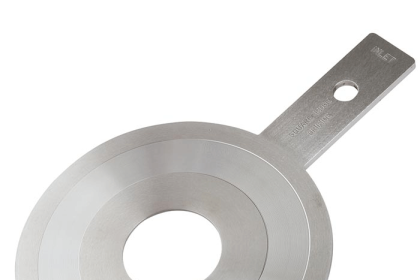
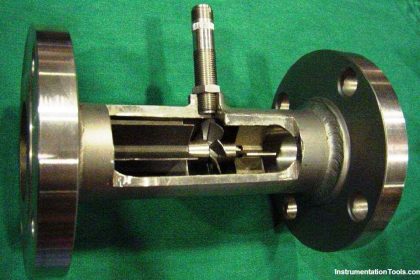
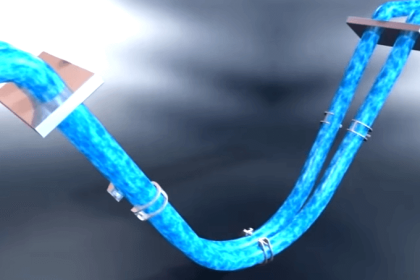
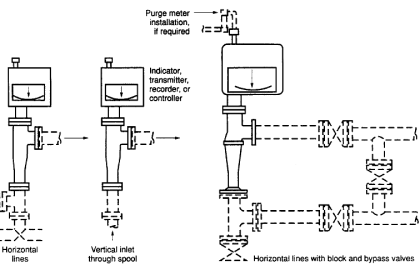
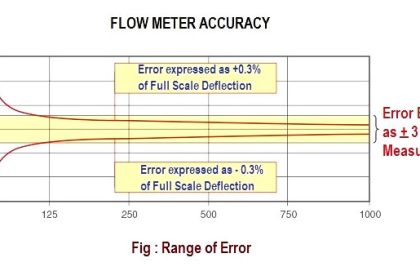
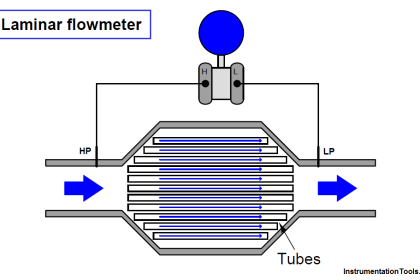


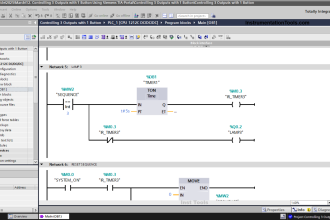

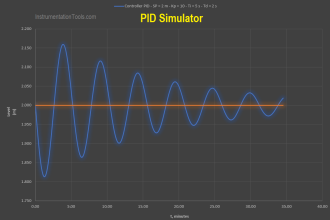
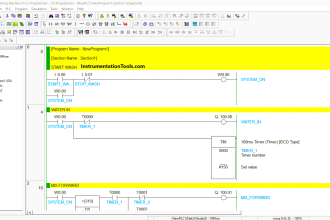
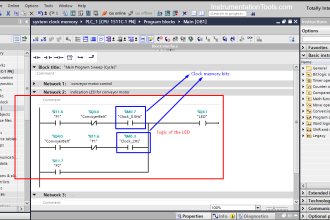
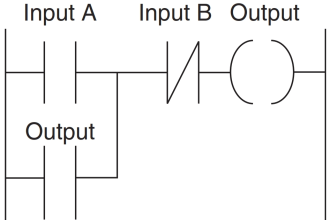

Hi! Very use full information thanks….
Can please send the above in pdf formate
Hello Prasad, Click Print button below the Post title & save it in PDF. Its all available to everyone.
Very useful information. Thank you.
useful post
dear sir,
I want some information about fuel gas metering calculation formula and factors.
we are using a metering transmitter that is simple DP transmitter but it is connected to a RTD. please give me information how it is calculating the flow in MMSDC
Soon it will be posted.
Good web for improving skills I loved it.
Thanx all team members.
Nice guide thanks for sharing.
I have a question and an observation.
There are a couple of typos on example is Bernoulli’s theorem (easy fix).
The other is I’ve seen the question about flow upstream or downstream of a control valve question and it always has the same answer you gave. It seems to me that the pressure drop can’t be maintained on either side. If the valve is closed the flow is zero and upstream the differential pressure will go to zero. Two things that do seem different is that the upstream side will always have a higher pressure and in single phase flow the upstream side should stay single phase.
very nice…keep it up….very useful for Instrumentation Engineer…..
Dear Sir,
HOW will calculate the orifice Accuracy